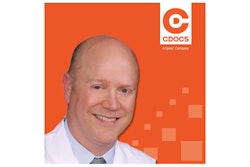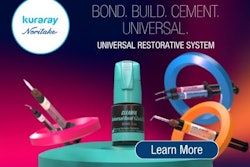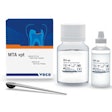This clinical tip, courtesy of CDOCS, focuses on custom tissue formers and how they can help with the dental implant healing process.
Learn more from Dr. Farhad Boltchi in the video below.
Video transcript
"This is Dr. Farhad Boltchi with CDOCS, and in this tip of the day video, I would like to discuss custom tissue formers and, specifically, custom tissue formers that are done through the Atlantis workflow.
"Now, as you can see here, when we have an implant with a regular healing abutment placed around it, we get a nice tissue cuff healing around that healing abutment. However, that tissue cuff typically is not the exact shape of the tooth contours or the emergence of the tooth contour. Now we can develop the peri-implant tissue contours with provisionals. But a lot of times in posterior sites and sometimes even in anterior sites, it is more feasible and quicker and less expensive to do it with custom tissue formers.
"With the Atlantis workflow, we have the luxury to do this in one step. So basically, we can take a scan with an Atlantis IO FLO Scanbodies, send that to Atlantis, and they can fabricate a custom tissue former that has the exact shape and contour as the final abutment, as you can see here on the left-hand slide.
"Now when we place this custom tissue former onto the implant that is done here, you can see that on the periapical radiograph, or here in the clinical pictures, it will immediately start to condition the tissues to the emergence profile of our final restoration that fits the exact restoration, because it has that design that Atlantis has done based on the final restoration. And the nice thing is that it also fits very precisely, because it is the exact same design, the exact same contours as the final abutment.
"So now, when it's time to place the final abutment, we can simply remove the custom tissue former and place the final abutment without any tissue blanching, without any anesthesia. It just drops right in because it has the same contour. So it's a very nice and inexpensive and quick way to condition the peri-implant tissues without having to do a provisional restoration.
"Please utilize this Atlantis workflow in your restorative implant cases to simplify the ease of soft-tissue development around the implant.
"I hope this tip of the day has been helpful. And as always, if you have any questions, please refer to the CDOCS website at CDOCS.com for further information, discussion, and videos on similar topics.



















